Botanical Names
Capsicum frutescens
Common Names
| Malaysia | Lada, cabai, lada burung, cili padi akar |
| English | Bird’s Eye Chilies |
Family
Solanaceae
Introduction
‘Cili api’ is one of the popular culinary herbs in Malaysia. It is believed that it originates from South American countries especially in Mexico. It is now being planted commercially in many tropical and sub-tropical countries. There are many different varieties that are being planted by the Malaysian farmers. In Malaysia the main areas planted are Perak, Johor and Kelantan.[1]
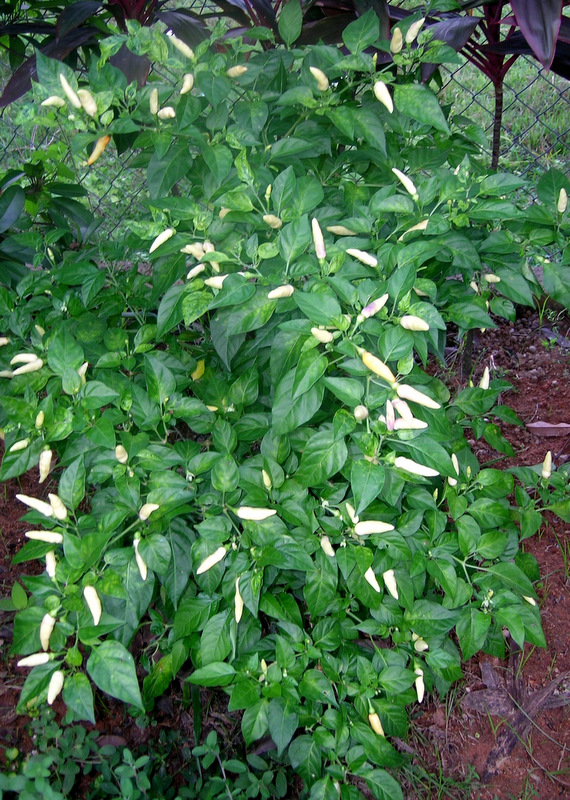
Morphological Features
‘Cili api’ is a perennial shrub, woody stem and can grow up to 100 – 150 cm high depending on the variety and crop vigourisity. The leaves are dark to yellowish green in colour, ovate in shape measuring about 1.5 cm wide and 6.0 cm long. The flowers are white and borne between the leaf axils. The fruits are oval to elongated in shape, red, green or white in colour depending on the varieties. It has a very strong tap and lateral root system.[1]
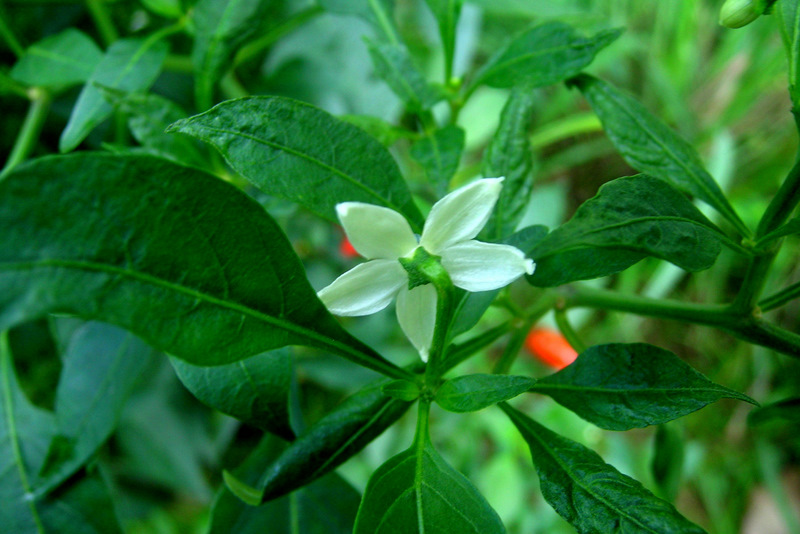
Medicinal Properties and Usage
In Malaysia, the fruits are normally used in flavouring soup and curry preparations. The bioactive compounds that contribute to its pungency are capsaicin and other aliphatic hydrocarbons, fatty acids and esters. The fruits of the hot and pungent cultivars when taken in small amounts have antiseptic and antirheumatic properties. The fruits are also taken as treatment for fevers, asthma and digestive problems.[1][2][3]
Soil Suitability and Climatic Requirement
‘Cili api’ requires well drained soil for optimum growth and thus best suited for sandy loam, clay loam, bris and tin tailings. With good management, it can also be planted on peat soils. The average monthly rainfall of about 200 mm is required during the crop growing seasons. The plant also needs ample sunlight for good growth.[1]
Field Preparation
Land Preparation
The planting area should be plough to the depth of 15-22 cm at least twice to improve the soil structure and eliminate weeds. Liming should be done during the first plough if the pH is less than 5.0. ‘Cili api’ is quite sensitive to water-logging and thus it is recommended to be planted on beds. The recommened bed size is 120 cm wide (furrow to furrow) and 20-30 cm high. Proper in-field drainage system shoud be developed to avoid flash floods.[1]
Production of Planting Materials
The seeds are relatively small and thus are recommended to be firstly sown in the nursery beds or sowing trays. The seeds start to germinate at 10–14 days after sowing. The germinated seeds are then selected and transplanted to the planting trays when it has 2-3 pairs of leaves. The seedlings are raised for another 2-3 weeks in the planting trays before field planting. At this stage, it has 3-4 pairs of leaves.[1]
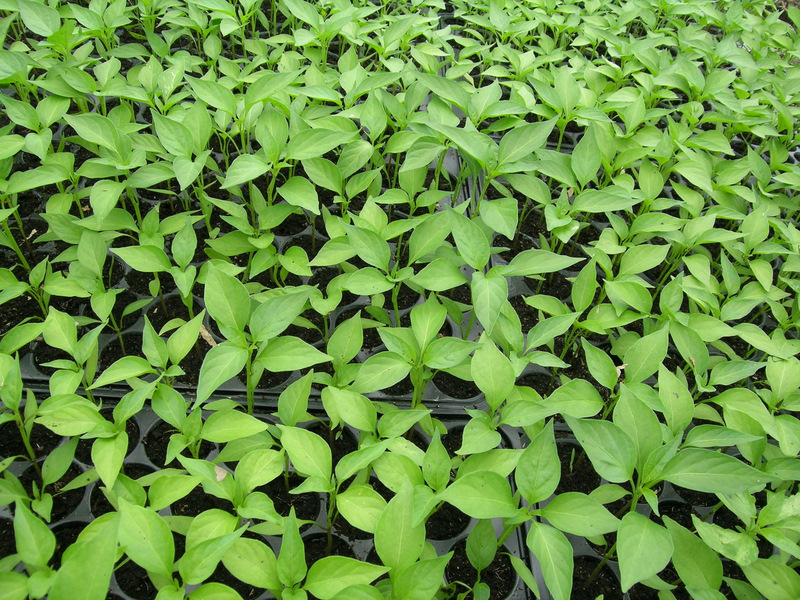
Field Planting
‘Cili api’ is recommended to be planted on the planting beds. The recommended planting sytem is single row planting at the planting distance of 80 cm within plant in a row. Interrow (furrow to furrow) spacing is 130 cm. This will give the population density of about 9,500 plants/ha. The use of silver shining plastic mulch can helps to solve the weed problems, conserve moisture and reduce the spread of virus. The drip tape irrigation system should be installed before the beds are covered with the mulch.[1]
Field Maintenance
Fertilisation
‘Cili api’ requires both the organic (chicken dung) and compound inorganic fertiliser (N:P:K:Mg=12:12:17:2) for maximum growth. Chicken dung should be given at one week after planting at the rate of 3-4 t/ha. The recommended rate for the compound fertiliser is 1.5 t/ha to be given at 2, 8 and 14 weeks after planting. Trace elements should be given as the foliar fertiliser when there are some symptoms of microelement deficiency. Planting on the sandy soils such as bris and tin tailing soils requires higher rate of chicken dung (10-15 t/ha).[1][4][5]
Weed Control
Good land preparation is very important in the post planting weed control. The use of silvershine reflective plastic mulching to cover the planting beds is no doubt the best practice in control weeds. The reflective plastic mulching alos helps to conserve mositure and reduce the pest infestations especially aphids.[1][4][5]
Water Management
Supplementary irrigation is needed in providing water for maximum growth during dry days. Drip irrigation system is recommended if the plastic are used. Drip irrigation is easy to handle, cheap and does not need a large water source. For alluvial soil with a large water source, furrow irrigation can be used. [1]
Pest and Disease Control
The common pests of ‘cili api’ are aphids, thrips, fruits borer, arrmy worms and fruits flies. The most common diseases on the otherhand are anthracnose, leaf spots, stem rots and bacterial wilts. These pests and diseases can be controlled by practicing good phytosantary measures and the proper use of pesticides and fungicides.[1]
Harvesting
The plant starts to bloom at 40-50 days after planting. The fruits will mature and be ready for harvesting 30-40 days after flowering. Harvesting can be carried at weekly intervals and lasts for about 3-4 months from the first harvests. The potential fresh yield of ‘cili api’ is about 10 t/ha.[1]
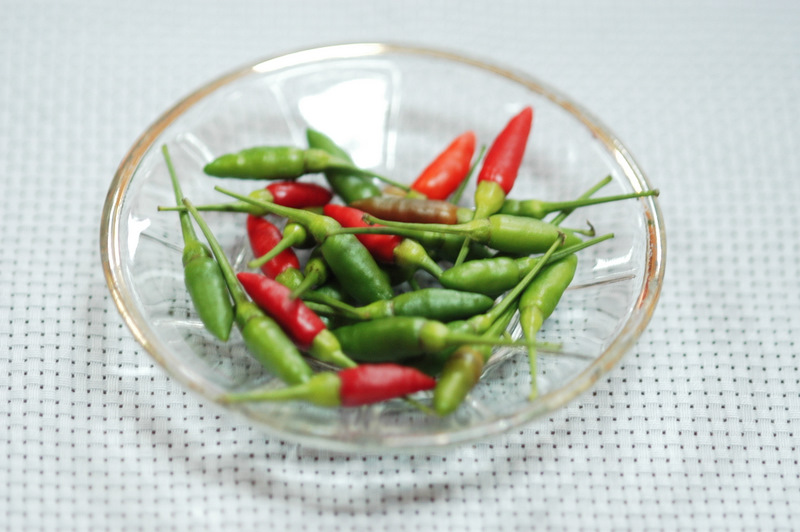
Postharvest Handling
The fruits are normally marketed fresh for culinary purposes. The harvested fruits should be cleaned, graded, packed and kept in a cool and dry place if there is a need to store stem before sending to the market.
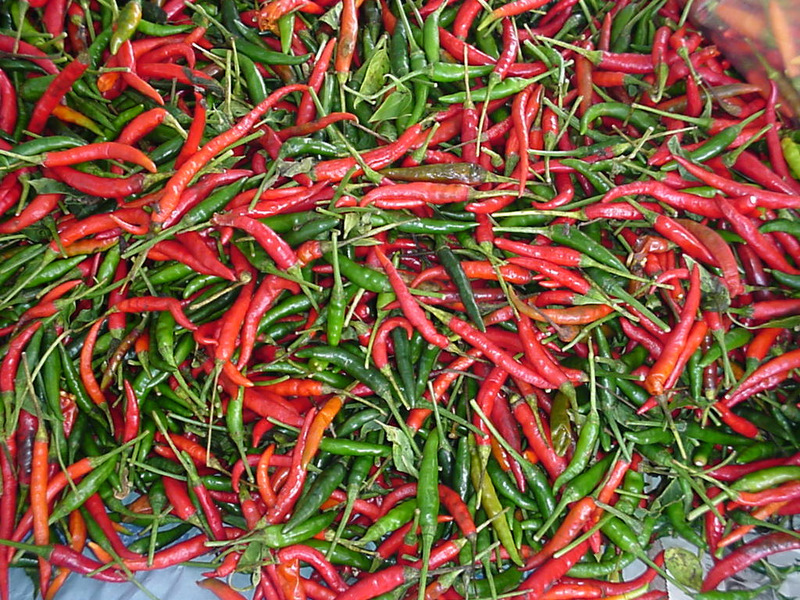
Estimated Cost Of Production
The estimated total cost of production for ‘cili api’ is RM 19,500 per hectare. The cost covers the both the cost agricultural inputs and labours. At the production level of about 10,000 kg/ha, the cost of production for a kilogram of fresh ‘cili api’ is about RM 1.90 / kg. The cost of production was estimated based on the current inputs cost during writing of this article.[1]
References
- Anon (2010). Panduan Lengkap Penanaman Cili Api. Kuala Lumpur : Department of Agriculture Peninsular Malaysia
- Chiej, R. (1984). Encyclopaedia of Medicinal Plants. MacDonald : United Kingdom
- Bown, D. (1995). Encyclopaedia of Herbs and their Uses. Dorling Kindersley : London.
- Melor, R. (2008). Cili padi baru Semerah. Serdang : MARDI
- Anon (2004). Rancangan perniagaan projek pembangunan tanaman cili padi akar. Persatuan Peladang Kawasan Nilam Puri, Kelantan (Unpublished).


